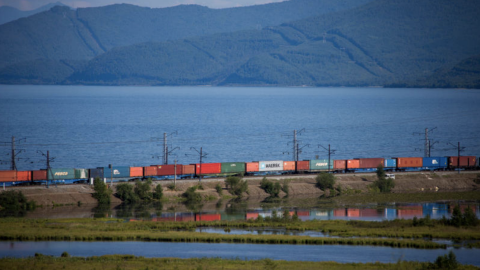
Russia-China rail underperforms, RZD in search of alternatives
Photo: RZD
Russian Railways confirmed their diversification plans for rail freight routes, which the market has seen as unfolding patterns for some months. Sanctions, however, are not the only underlying reason for their approach since, as the company’s deputy head, Alexey Shilo, explained, RZD also faces issues with underused border crossings with China due to its neighbour’s strict Covid policy.
Do you want to read the full article?
Thank you for visiting RailFreight.com. Become a member of RailFreight Premium and get full access to all our premium content.
Are you already a member?
Having problems logging in? Call +31(0)10 280 1000 or send an email to customerdesk@promedia.nl.




